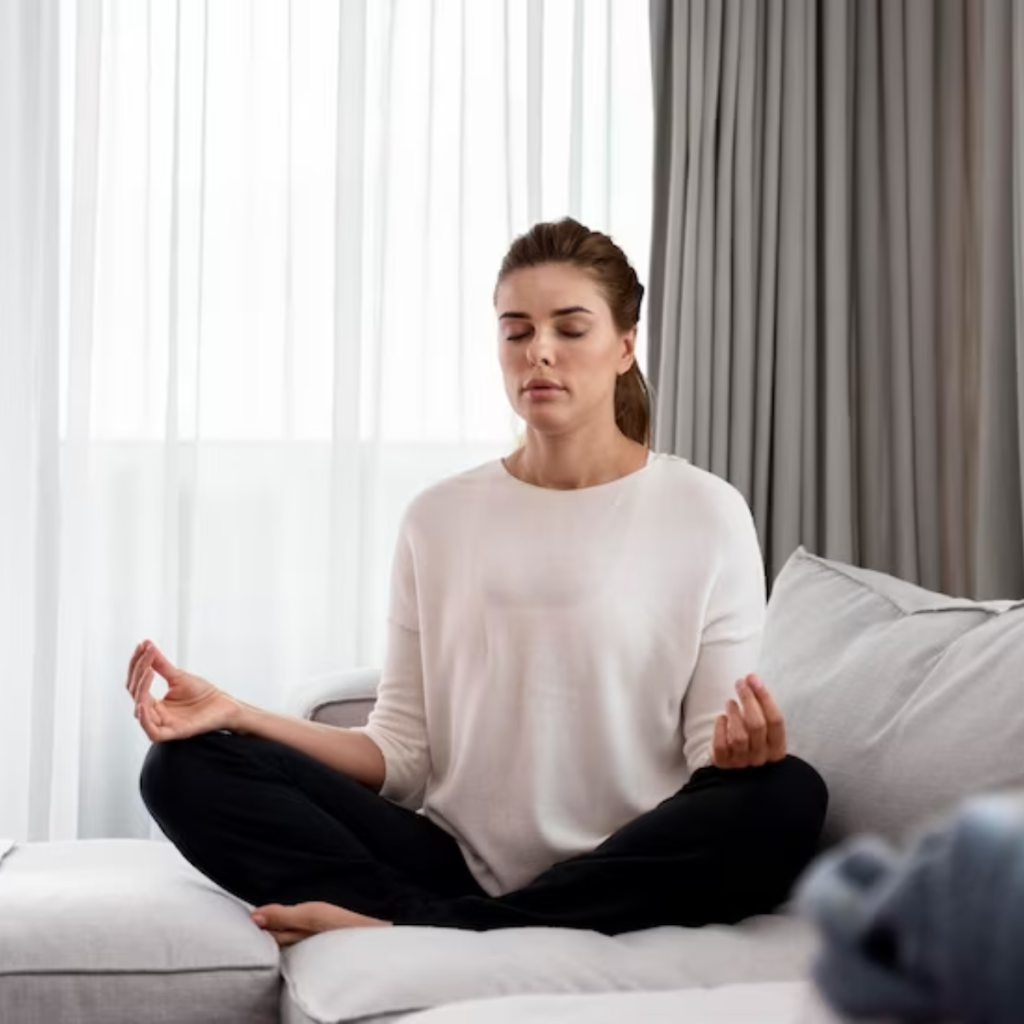Discover the effectiveness of relaxation techniques and meditation in managing postpartum back pain.
How Effective Are Relaxation Techniques and Meditation for Managing Postpartum Back Pain?
Postpartum back pain can be a real pain in the, well, back. But fear not, because there are effective ways to manage and alleviate this discomfort. In this article, we’ll explore how relaxation techniques and meditation can work wonders in tackling postpartum back pain. So grab your yoga mat and let’s dive in!

Understanding Postpartum Back Pain
Before we delve into the magical world of relaxation techniques and meditation, it’s important to understand what postpartum back pain is all about. This type of back pain typically occurs after childbirth and can be caused by a variety of factors.
During pregnancy, your body undergoes significant changes to accommodate the growing baby. The weight gain and the shifting of your center of gravity can put extra strain on your back, leading to discomfort and pain. As your uterus expands, it can also push against your spine, further contributing to the discomfort.
But it’s not just the physical changes that can cause postpartum back pain. Hormonal changes play a role too. During pregnancy, your body releases a hormone called relaxin, which helps to loosen the ligaments in your pelvis to prepare for childbirth. However, this hormone can also affect the ligaments in your back, making them more susceptible to strain and injury.
Causes of Postpartum Back Pain
There are several culprits behind postpartum back pain. From the physical strain of pregnancy to changes in posture and weight distribution, your back undergoes quite the transformation during those nine magical months.
Additionally, hormonal changes and weakened abdominal muscles can also contribute to the discomfort. This can happen because, let’s face it, your body just went through a marathon, and it needs a little time to recover.
It’s important to note that the way you care for your baby can also impact your back. Constantly lifting and carrying your little one, bending over to change diapers, and breastfeeding in awkward positions can all put strain on your back muscles.
Symptoms and Duration of Postpartum Back Pain
Postpartum back pain can manifest in various ways. You might experience dull or sharp pain in your lower back, or it could radiate down to your buttocks or legs. Fun stuff, right?
But don’t worry, you’re not alone. Many new moms experience back pain after giving birth. In fact, studies have shown that up to 90% of women report some degree of back pain during the postpartum period.
Now, you might be wondering how long this unwelcome guest will overstay its welcome. On average, postpartum back pain can last between 6 weeks and 6 months. But remember, every body is different, so don’t worry if yours takes a little longer or bounces back faster.
It’s important to seek medical advice if your back pain is severe, persistent, or accompanied by other concerning symptoms. Your healthcare provider can help determine the underlying cause of your pain and recommend appropriate treatment options.
The Role of Relaxation Techniques in Pain Management
When it comes to managing postpartum back pain, relaxation techniques have your back (quite literally!). These techniques can calm your mind, relieve muscle tension, and help you relax.
Postpartum back pain is a common issue that many new mothers experience. The physical strain of pregnancy and childbirth can take a toll on the body, especially the back. It’s no wonder that finding effective pain management techniques becomes a top priority for these women.
Fortunately, relaxation techniques offer a natural and non-invasive approach to pain relief. By incorporating these techniques into your daily routine, you can find relief from the discomfort and focus on enjoying the precious moments with your newborn.
Different Types of Relaxation Techniques
There’s a whole smorgasbord of relaxation techniques out there, and you can pick and choose the ones that work best for you. From deep breathing exercises and progressive muscle relaxation to guided imagery and aromatherapy, the options are endless.
Deep breathing exercises are a simple yet powerful technique that can help you relax and reduce pain. By taking slow, deep breaths, you can increase oxygen flow to your muscles and promote relaxation throughout your body.
Progressive muscle relaxation involves tensing and then releasing different muscle groups in your body. This technique helps you become more aware of muscle tension and teaches you how to release it, leading to a greater sense of relaxation and pain relief.
Guided imagery is a technique that uses visualization to create a calming and soothing experience. By imagining yourself in a peaceful and serene environment, you can distract your mind from the pain and promote a sense of relaxation.
Aromatherapy involves the use of essential oils to promote relaxation and relieve pain. Certain scents, such as lavender and chamomile, have been found to have calming effects on the mind and body, making them ideal for pain management.
It’s like having a spa day for your mind and body without leaving the comfort of your own home. Who says you can’t be a zen master with a newborn baby in tow?
The Science Behind Relaxation and Pain Relief
Now, you might be wondering if these relaxation techniques are just a bunch of hocus-pocus. But fear not, because science has got your back (pun intended)!
Studies have shown that relaxation techniques can help reduce pain perception, promote better sleep, and even enhance overall well-being. When you engage in relaxation techniques, your body releases endorphins, which are natural painkillers. These endorphins not only help alleviate pain but also create a sense of euphoria and well-being.
Additionally, relaxation techniques can help reduce muscle tension and promote better blood circulation. By relaxing your muscles and improving blood flow, you can experience a decrease in pain and discomfort.
Furthermore, relaxation techniques have been found to have a positive impact on mental health. They can help reduce stress, anxiety, and depression, which are often associated with chronic pain. By promoting a state of relaxation and calmness, these techniques contribute to an overall improvement in well-being.
So go ahead, give yourself permission to take a moment and de-stress. Your body will thank you. Incorporating relaxation techniques into your daily routine can make a significant difference in managing postpartum back pain and improving your overall quality of life.
Meditation as a Tool for Managing Back Pain
If relaxation techniques are like a soothing massage for your senses, then meditation is like hitting the reset button for your mind. It can help you find inner peace and calm, even in the midst of back pain chaos.
Imagine yourself in a serene and tranquil setting, surrounded by the gentle sounds of nature. As you close your eyes and take a deep breath, you feel the tension in your back slowly melting away. The power of meditation lies in its ability to transport you to a state of deep relaxation, where the troubles of the world seem to fade into the background.
The Basics of Meditation
Meditation doesn’t require you to be a Jedi master or sit in an uncomfortable pretzel-like position for hours on end. It’s simply about finding a quiet space, focusing your attention, and letting go of the daily mommy mayhem.
Picture yourself in a cozy corner of your home, surrounded by soft pillows and warm blankets. You sit comfortably, with your back supported and your feet planted firmly on the ground. As you close your eyes, you begin to notice the rhythm of your breath, inhaling and exhaling in a steady flow.
By practicing mindfulness and being fully present in the moment, you can cultivate a sense of inner stillness that can work wonders in managing your postpartum back pain. With each breath, you release the tension in your muscles, allowing them to relax and unwind.
Meditation and Pain Perception
Now, you might be asking yourself, “Can meditation actually help me deal with this pesky back pain?” Well, dear reader, studies suggest that meditation can indeed reduce pain perception and increase pain tolerance.
Imagine yourself in a laboratory, participating in a groundbreaking study on the effects of meditation on pain. As you sit in a comfortable chair, electrodes attached to your body, you are asked to focus your attention on your breath. With each inhale and exhale, you feel a sense of calm washing over you.
The researchers monitor your brain activity and measure your pain levels as they administer mild electric shocks to your back. Surprisingly, as you continue to meditate, you notice that the pain feels less intense. It’s as if your mind has created a protective shield, shielding you from the discomfort.
By training your brain to let go of pain signals and shifting your focus towards a more peaceful state of mind, you can reclaim some control over your discomfort and find relief. With each meditation session, you strengthen your ability to detach from the physical sensations and embrace a sense of tranquility.
Comparing the Effectiveness of Relaxation Techniques and Meditation
Now that we’ve explored the power of relaxation techniques and meditation individually, let’s put them head-to-head in a friendly battle for pain management supremacy.
Benefits and Limitations of Relaxation Techniques
Relaxation techniques offer a plethora of benefits, from reducing muscle tension and stress to promoting better sleep and overall well-being. Plus, they’re relatively easy to learn and can be practiced anywhere, anytime.
But like all superheroes, they also have their limitations. While relaxation techniques can provide immediate relief, their effects may not be long-lasting. So to keep the back pain at bay, consistency is key!

Benefits and Limitations of Meditation
Ah, meditation, the mystical art of finding your inner calm. Besides reducing pain perception and increasing pain tolerance, meditation can also improve focus, enhance emotional well-being, and boost your overall resilience.
However, it’s important to note that meditation is a skill that requires practice. It might take some time and patience to fully reap the benefits. But hey, Rome wasn’t built in a day, and your zen oasis won’t be either.
Integrating Relaxation Techniques and Meditation into Your Routine
Now that you’re armed with the knowledge of relaxation techniques and meditation, it’s time to weave them into your postpartum routine like a tapestry of tranquility.
Practical Tips for Starting a Relaxation Practice
Start small and gradually build up your relaxation practice. Whether it’s setting aside a few minutes each day to focus on deep breathing or incorporating a soothing lavender-scented candle into your bedtime routine, find what works for you.
Remember, consistency is key. So even if life gets chaotic (and trust us, it will), carve out a little slice of tranquility for yourself each day.
How to Incorporate Meditation into Your Daily Life
Integrating meditation into your daily life doesn’t mean you have to retreat to a mountaintop monastery (although that does sound tempting). It’s about finding pockets of stillness amidst the chaos.
Set aside a few minutes in the morning or before bed to sit quietly, focus on your breath, and embrace the peace within. And don’t worry, even if thoughts pop up like weeds in a garden, just acknowledge them and gently let them go.
So there you have it, dear reader. Relaxation techniques and meditation can be effective tools in managing postpartum back pain. Remember to listen to your body, be patient with yourself, and embrace the journey to a pain-free existence. Now go forth, find your inner zen, and bid adieu to postpartum back pain!



